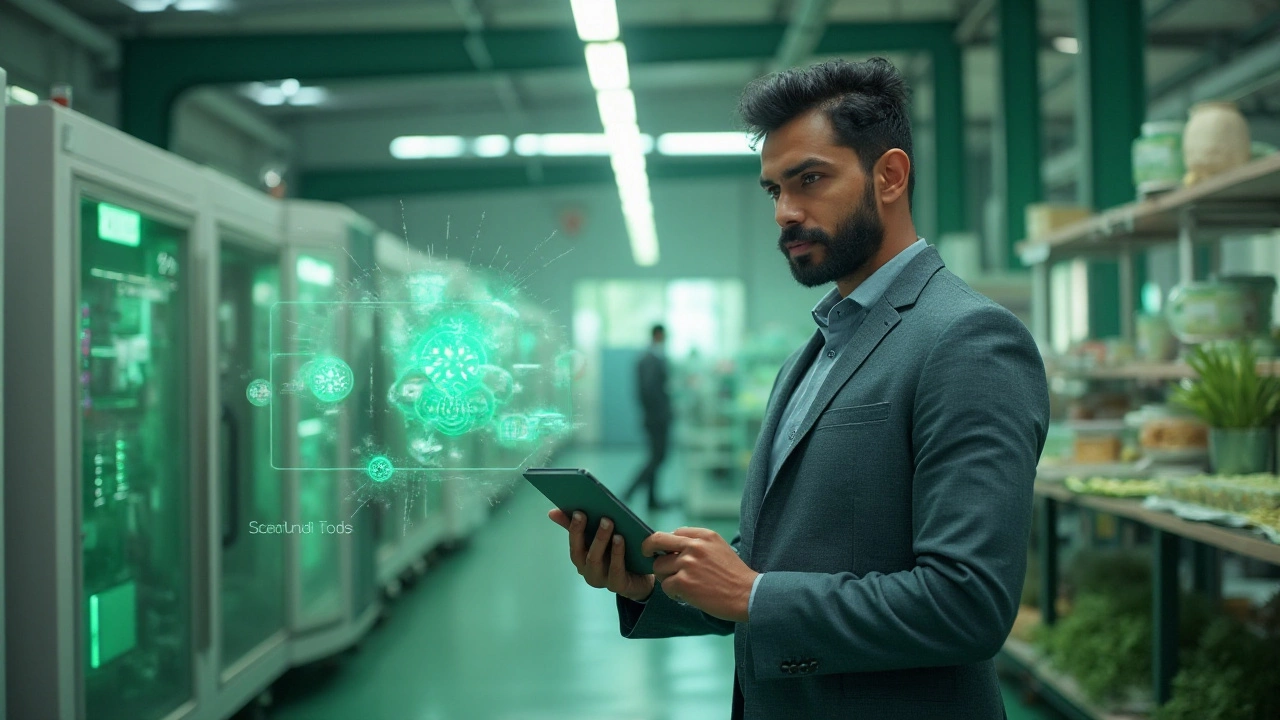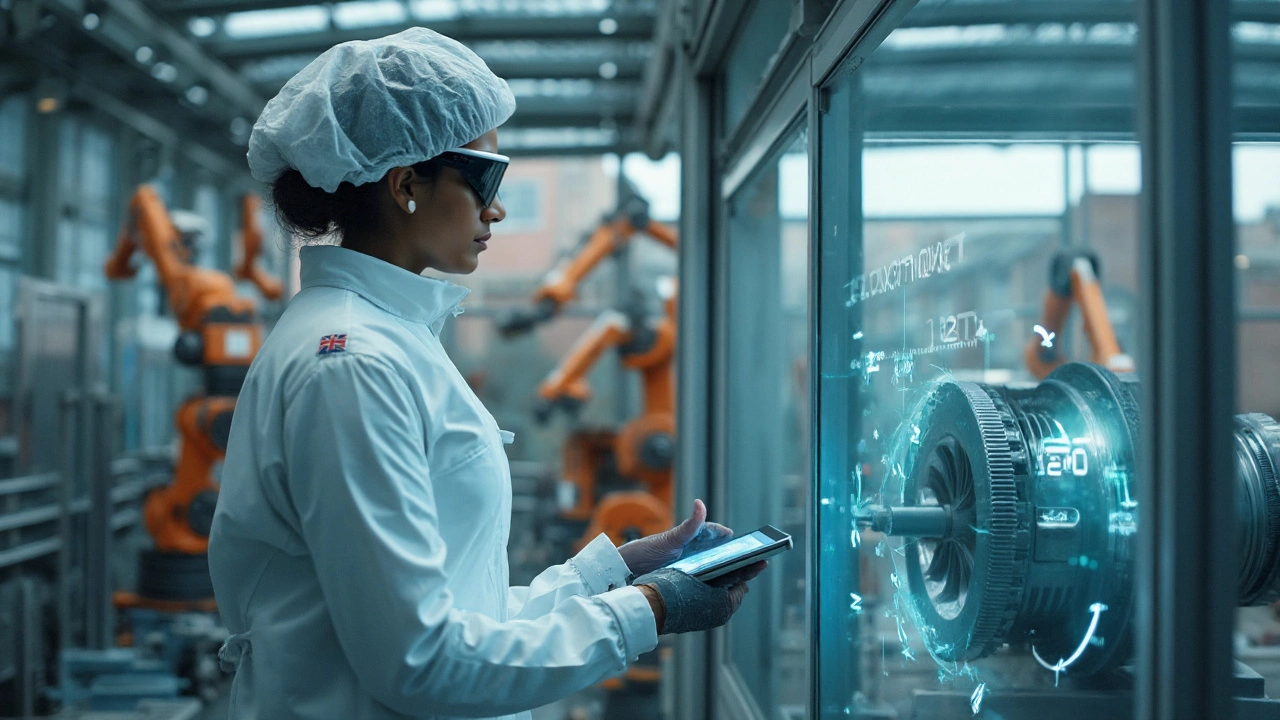Is U.S. Manufacturing Poised for Growth? Insights and Analysis
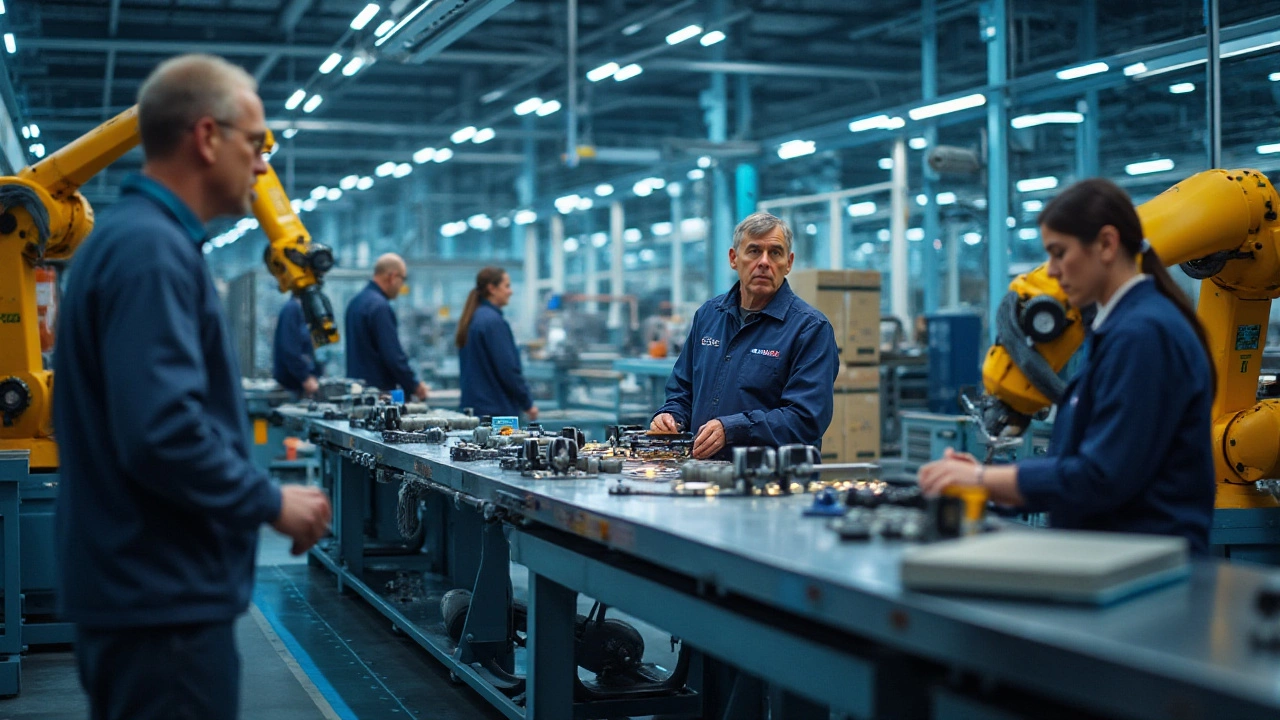
The American manufacturing sector finds itself at an interesting crossroads, with a convergence of technological advancements, economic policies, and global shifts influencing its path forward. Historically a cornerstone of the U.S. economy, manufacturing is now navigating through a rapidly changing landscape.
In recent years, there have been significant efforts by the government to revitalize this sector through various incentives and programs. These initiatives aim to foster innovation, enhance productivity, and secure the supply chains, positioning the U.S. as a competitive player on the global stage once more.
Yet, challenges remain. From supply chain disruptions to the need for sustainable practices, the sector must adapt to modern demands and consumer expectations. Whether it's through embracing cutting-edge technologies or reevaluating long-standing practices, the future of U.S. manufacturing seems set to be as dynamic as its storied past.
- Current State of U.S. Manufacturing
- Government Initiatives and Support
- Technological Advancements
- Challenges and Future Prospects
Current State of U.S. Manufacturing
As we explore the current state of U.S. manufacturing, it's evident that the sector is experiencing a mix of resilience and innovation amidst economic shifts and global competition. Historically a powerhouse, American manufacturing has been reshaping its identity with modern approaches. Recent years have seen an uptick in optimism as manufacturers adopt digital transformation, illustrating a shift towards more technologically sophisticated operations. Automation and the use of AI are not just buzzwords but are actively being integrated into manufacturing processes, helping companies boost efficiency and reduce costs.
The global pandemic underscored the vulnerabilities in international supply chains, prompting a reconsideration of reshoring strategies. This shift is gradually leading companies to bring operations back to U.S. soil, aiming to create more robust and resilient production lines. In reaction, several industries have witnessed a renaissance in domestic manufacturing activities, with investments pouring into the establishment of advanced manufacturing hubs across various states.
According to data released by the U.S. Census Bureau, manufacturing output has been climbing steadily after a slump brought on by supply chain disruptions. The recent North American Manufacturing Research Conference highlighted that American factories have been working towards increasing their digital competencies by adopting technologies such as 3D printing, IoT devices, and machine learning algorithms.
"Digital twin technology is revolutionizing the way companies approach production schedules," notes a recent report from PwC. "By creating virtual replicas of physical assets, manufacturers can simulate performance and make data-driven decisions in real time."Manufacturers are also focusing more on sustainable practices, aiming to reduce their environmental impact. With climate concerns escalating, embracing sustainability is not just a trend but a necessity. Companies are now implementing strategies that involve reduced energy consumption, waste reduction, and greener supply chains to meet regulatory requirements and consumer expectations.
Despite the promising developments, challenges persist. Labor shortages remain a critical issue as the industry faces an aging workforce and struggles to attract younger talent. As the demand for skilled labor grows, organizations are investing in reskilling programs to prepare the next generation of the manufacturing workforce, ensuring they have the skills necessary to operate and innovate in a modern industrial environment.
There's also a need to address infrastructure bottlenecks that can hinder growth. Improvements in transportation and logistics are crucial to support a sector transitioning to a more tech-oriented future. This period of transformation will likely continue as manufacturing endeavors to reclaim its leading role within the U.S. economy.
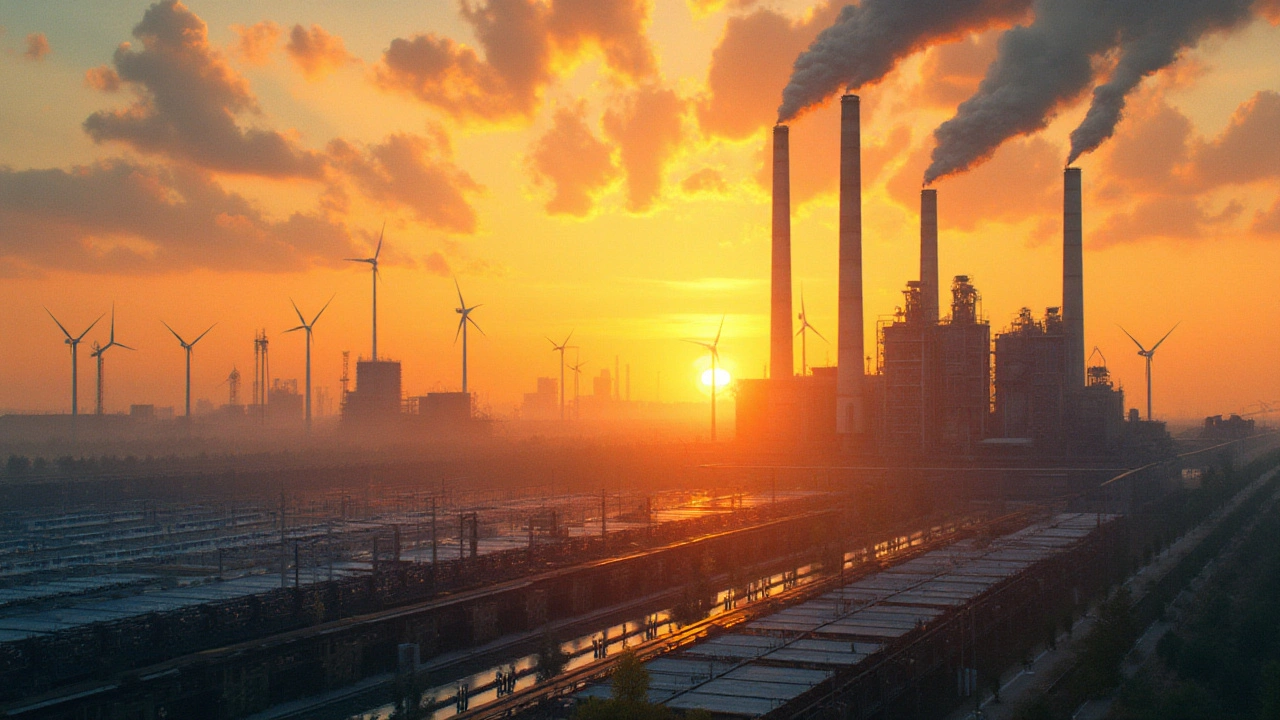
Government Initiatives and Support
In an era where U.S. manufacturing is poised on the brink of a renaissance, government initiatives are playing a monumental role in shaping this evolution. The fabric of support woven by these initiatives aims to not just rejuvenate the sector but to elevate it to new heights in the global market. One of the cornerstone strategies has been the emphasis on reshoring and bolstering domestic production capabilities. Policies encouraging businesses to bring back manufacturing operations to the United States are not only about job creation but also about reducing dependency on volatile international supply chains. By fostering an environment that champions domestic growth, the government is setting the stage for sustainable and resilient economic development.
An array of federal programs has been tailored to enhance industry growth by injecting innovation into the manufacturing process. The Manufacturing USA initiative, for instance, is a network of advanced manufacturing institutes aimed at accelerating innovation. It serves as a collaborative platform where various stakeholders—from private companies to academic institutions—come together to drive technological advancements. This dynamic synergy is critical in transforming traditional manufacturing practices into high-tech processes that are more efficient and environmentally friendly. By cultivating a fertile ground for research and development, these programs are helping to ensure that American manufacturing remains competitive on the global stage.
In addition to fostering innovation, economic policies have been directed towards financial incentives that ease the burden on manufacturers. Tax credits, subsidies, and grants are tools being utilized to stimulate investment in new technologies and processes. The Inflation Reduction Act, for instance, has provisions that specifically target the manufacturing sector by supporting eco-friendly projects, aiming to reduce the industry's carbon footprint. This legislative support is crucial in aligning the manufacturing sector with twenty-first-century environmental standards. By incentivizing green practices, the government is not only supporting economic growth but also ensuring that it aligns with global sustainability goals, a concern that resonates with both policymakers and consumers alike.
It's worth noting the bipartisan support that these initiatives often receive, reflecting their importance. Congress has, time and again, shown its backing through legislation that empowers the sector. As trade policies evolve, there is a clear focus on establishing fair trade practices that protect American industries from unfair competition abroad. Addressing issues like dumping and intellectual property theft, these policies contribute to a level playing field, essential for the thriving of U.S. manufacturing. Such government actions usher in confidence among manufacturers, assuring them of a robust policy framework that safeguards their interests in a fiercely competitive global market.
At the heart of these government efforts is a profound commitment to supporting the workforce. Investments in education and training programs are designed to equip workers with the skills they need to navigate the modern U.S. manufacturing landscape. Programs such as apprenticeship initiatives and partnerships with vocational schools emphasize upskilling, thereby closing the skills gap that has long plagued the industry. By nurturing a skilled and adaptable workforce, the aim is to create not just jobs but career paths that offer growth and stability in the manufacturing sector. This workforce transformation is pivotal as it empowers workers to contribute effectively to the industry's dynamism and innovation.
In the words of the U.S. Secretary of Commerce, Gina Raimondo, "The strength of America's economy is intrinsically linked to our manufacturing industry. Our aim is to ensure that this sector flourishes through support that aligns with both technological advancements and economic realities."
"Investing in our manufacturing sector is not just about products; it's about people, communities, and maintaining our competitive edge globally,"highlighting the profound impact of these government initiatives. In this multifaceted approach, the future of American manufacturing appears bright, marked by resilience, adaptability, and innovation.
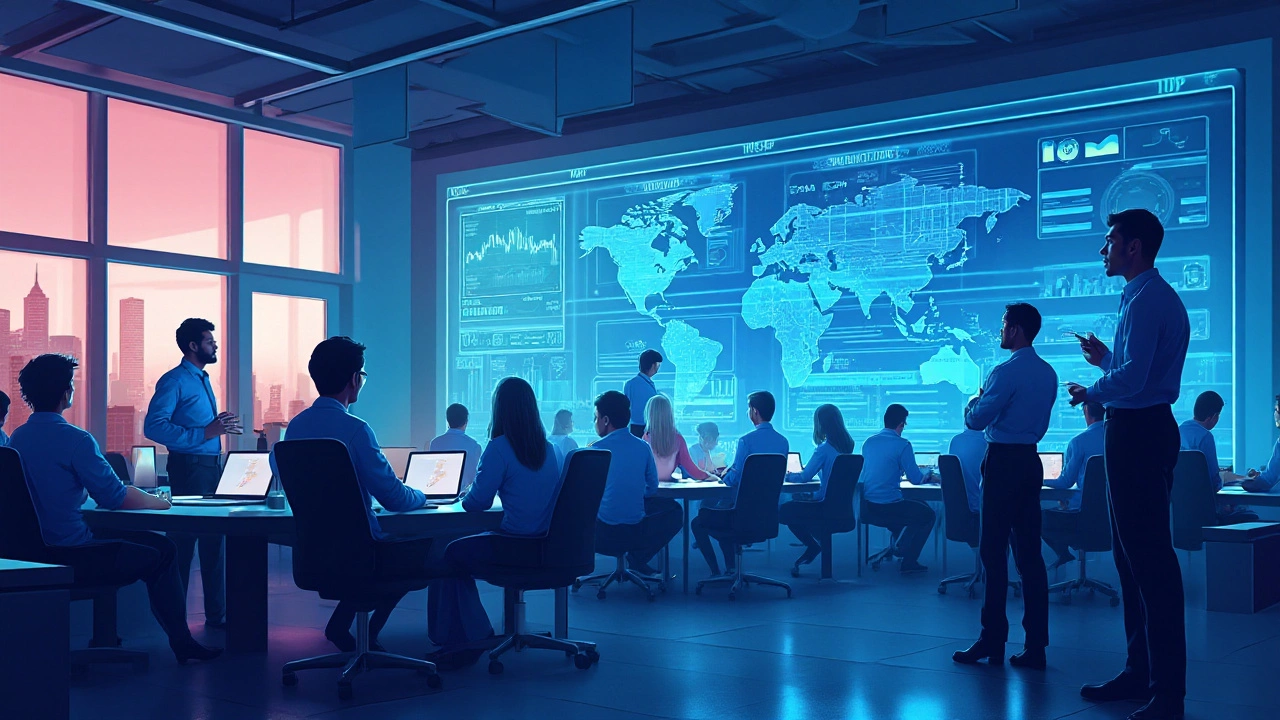
Technological Advancements
The U.S. manufacturing industry is undergoing a pivotal transformation, courtesy of rapid technological advancements that are redefining both production processes and business models. One of the most influential technologies making waves in this sector is the Internet of Things (IoT). By embedding sensors and connectivity in machinery, IoT enables real-time monitoring and predictive maintenance, significantly reducing downtime and improving efficiency. Such smart technologies allow manufacturers to anticipate equipment malfunctions before they lead to costly shutdowns. This innovation isn't just theoretical; it’s actively transforming factory floors across America.
Another profound advancement reshaping the landscape is the application of Artificial Intelligence (AI) and machine learning. AI allows for enhanced data analytics capabilities, facilitating more efficient decision-making processes. With AI, manufacturers can optimize production schedules, improve quality control, and even predict consumer demand trends. In fact, research has shown that companies leveraging AI in manufacturing operations have noted up to a 20% improvement in productivity. The use of AI-driven robots in automating repetitive tasks has also freed up human workers to focus on more complex roles, thereby enhancing workplace agility and responsiveness.
Advanced robotics, similarly, are playing a key role in the resurgence of U.S. manufacturing. Modern robotics come equipped with sophisticated vision systems and AI capabilities that enable them to learn and adapt in human-like fashion. According to a study by the Association for Advancing Automation, U.S. factories purchased a record number of robots in 2022, underlining this trend’s significance. The addition of collaborative robots or 'cobots' that can safely work alongside human workers has further solidified robotics’ place in the sector.
As Susan Helper, an economist and former chief economist of the U.S. Commerce Department, puts it, "The integration of advanced technologies into manufacturing not only bolsters production capabilities but also revitalizes the sector’s role as a linchpin of economic growth."
Moreover, advancements in 3D printing, also known as additive manufacturing, have opened new avenues for customization and prototyping. Companies are able to quickly iterate product designs and create complex components that were once prohibitively expensive or impossible to manufacture using traditional methods. According to reports, the 3D printing market in manufacturing is expected to reach $51 billion by 2030, illustrating its burgeoning impact. This innovation is particularly beneficial for industries such as aerospace and automotive, where precise component design is crucial.
The shift towards digital twins is another fascinating technological trend. Digital twins create virtual replicas of physical assets, allowing manufacturers to simulate operations and forecast the potential impacts of changes. This capability has far-reaching implications for maintenance, repair, and operations efficiency, enabling more informed strategic decisions. A recent survey showed that 48% of manufacturing executives identified digital twins as a key strategic priority, reflecting their growing importance within the industry.
In conclusion, these technological advancements are not only enhancing productivity and efficiency but are also crucial in maintaining competitiveness in a global market. By adopting these innovative solutions, the U.S. manufacturing sector is poised to navigate the challenges of the modern world while spearheading growth and development. Not only does technology serve as a tool to meet existing market demands, but it also fosters the creation of new markets, ensuring the sector's resilience and adaptability in an ever-evolving economic landscape.
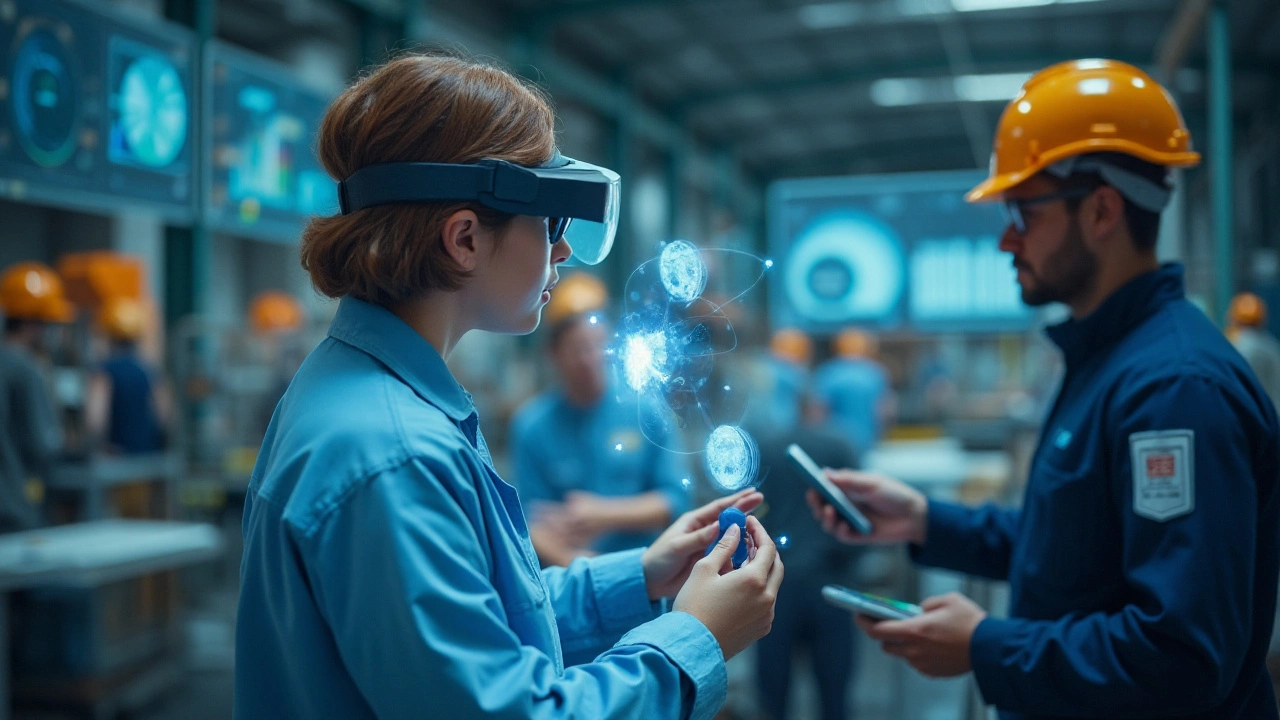
Challenges and Future Prospects
As the U.S. endeavors to bolster its manufacturing sector, several key challenges loom large, threatening to derail its momentum if not adeptly addressed. First and foremost is the issue of labor shortages. With a dwindling pool of skilled laborers, companies face difficulties in not only filling vacancies but also in ensuring that the workforce is adept at handling new-age technologies such as robotics and AI. Addressing this skills gap requires substantial investments in education and training, particularly in STEM fields. Programs that encourage technology adoption among workers are pivotal in ensuring that American manufacturing does not lag behind due to human resource constraints.
Another significant challenge lies in the fragility of supply chains. Recent global disruptions have starkly highlighted the vulnerabilities inherent in modern supply chains, sparking a rethinking of how these are structured. While some have advocated for reshoring – the practice of bringing manufacturing back to the U.S. – as a solution, this strategy demands careful consideration and execution. The logistical, economic, and environmental implications are complex and necessitate a balanced approach. Companies need to assess how best to achieve resilience while maintaining efficiency.
The push for sustainability is no longer optional for manufacturers aiming for long-term viability. With increasing consumer demand for eco-friendly products and stricter governmental regulations concerning emissions and waste management, manufacturing entities must adapt their processes to reduce their environmental footprint. This transition toward green manufacturing is not merely about compliance but also represents an opportunity to innovate, potentially leading to cost savings in the long run. The advent of green technologies, such as energy-efficient machinery and sustainable materials, offers avenues for industries willing to invest in them.
Technological advancements also bring a dual-edged sword. While automation and artificial intelligence promise unprecedented levels of productivity and precision, they also pose the threat of job displacement. Companies are faced with the task of balancing technological adoption with human employment – a challenge that requires not just economic calculus but also corporate social responsibility. Ensuring that these technologies augment rather than supplant human effort is key to fostering a harmonious manufacturing ecosystem.
Looking ahead, the resilience of the U.S. manufacturing sector will likely depend on its ability to innovate and adapt to changing conditions. Government support remains pivotal in this regard, with policies favoring research and development, tax incentives, and infrastructure improvements. A collaborative approach, involving both public and private sectors, can pave the way for sustainable growth. A recent study from Deloitte projects that if these challenges are effectively managed, the U.S. manufacturing sector could add up to 2.4 million jobs by 2028, highlighting the potential for growth despite current hurdles.
The path forward for U.S. manufacturing is indelibly tied to pragmatic strategies that address workforce adequacy, supply chain resilience, and sustainable practices. By focusing on these areas, the industry can not only overcome its immediate challenges but also secure its role as a global leader in manufacturing excellence.

